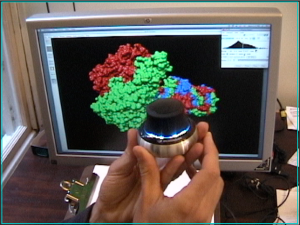

 about
projects
people
publications
resources
resources
visit us
visit us
search
search
about
projects
people
publications
resources
resources
visit us
visit us
search
search
Quick Links
Recent Citations
Molecular architecture of coronavirus double-membrane vesicle pore complex. Huang Y, Wang T et al. Nature. 2024 Sep 5;633(8028):224–231.
FANCD2-FANCI surveys DNA and recognizes double- to single-stranded junctions. Alcón P, Kaczmarczyk AP et al. Nature. 2024 Aug 29;632(8027):1165–1173.
Transport and inhibition mechanisms of the human noradrenaline transporter. Hu T, Yu Z et al. Nature. 2024 Aug 22;632(8026):930–937.
Cryo-EM architecture of a near-native stretch-sensitive membrane microdomain. Kefauver JM, Hakala M et al. Nature. 2024 Aug 15;632(8025):664-671.
An integrative structural study of the human full-length RAD52 at 2.2 Å resolution. Balboni B, Marotta R et al. Commun Biol. 2024 Aug 8;7(1):956.
Previously featured citations...Chimera Search
Google SearchNews
August 1, 2024
Planned downtime: The Chimera and ChimeraX websites, web services (Blast Protein, Modeller, ...) and cgl.ucsf.edu e-mail will be unavailable August 1, 3-6 pm PDT.
July 16, 2024
Chimera production release 1.18 is now available. See the release notes for details.
June 17-18, 2024
Planned downtime: The Chimera and ChimeraX websites, web services (Blast Protein, Modeller, ...) and cgl.ucsf.edu e-mail will be unavailable June 17-18 PDT.
Previous news...Upcoming Events

UCSF Chimera is a program for the interactive visualization and analysis of molecular structures and related data, including density maps, trajectories, and sequence alignments. It is available free of charge for noncommercial use. Commercial users, please see Chimera commercial licensing.
We encourage Chimera users to try ChimeraX for much better performance with large structures, as well as other major advantages and completely new features in addition to nearly all the capabilities of Chimera (details...).
Chimera is no longer under active development. Chimera development was supported by a grant from the National Institutes of Health (P41-GM103311) that ended in 2018.
Feature Highlight

Space Navigator is an inexpensive ($60) USB input device from 3Dconnexion for moving and rotating models in 3 dimensions. This animation (8 Mb) shows docking a phage enzyme (PDB 1v0e) into an electron microscopy map (EMDB 1333) using a space navigator and mouse. Works with Windows and Mac Chimera versions (details).
(More features...)Gallery Sample

Peroxiredoxins are enzymes that help cells cope with stressors such as high levels of reactive oxygen species. The image shows a decameric peroxiredoxin from human red blood cells (Protein Data Bank entry 1qmv), styled as a holiday wreath.
See also the RBVI holiday card gallery.
About RBVI | Projects | People | Publications | Resources | Visit Us
Copyright 2018 Regents of the University of California. All rights reserved.